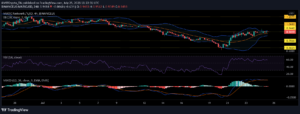
I’ve worked with many different firms – banks and vendors on their platform modernisation journeys and have discovered that there are a number of common themes across the financial services industry in terms of the challenges they face, the technologies they use to modernise their IT systems and what the recipe for success looks like.
I often get asked ‘how are other firms doing this?’ so I have summarised and brought it all together in a 3 part blog series.
In this series I will:
- Describe some of the challenges firms are facing to modernisation
- Provide insight into what disruptive technologies have emerged to accelerate and
simplify transformation - Share my tips for success
First off, Part 1 – The challenges…
Challenges to Modernisation faced by the Industry
Having spent 20 years in financial services and specifically in front office technology, it’s clear to see how the technology debt has stacked up in that time. The average trader’s desktop is roughly 15 years old and cluttered with disparate applications that don’t communicate with each other.
Up until now, trading technology just hasn’t kept up in the way that it has in our personal lives, be it with our mobile phones or using websites such as Amazon or Facebook where technology moves at lightning speed.
Digital transformation has been steadily gathering momentum, however, as banks and vendors realise that they can no longer patch these monoliths and expect them to remain fit for purpose. But the thought of re-engineering your entire technology stack can be a daunting one and firms need to overcome a number of challenges in order to understand where to begin.
Complexity Creep
One of the biggest challenges firms face is complexity creep where their technology stack and associated systems and processes become more complex over time and are held together by patches and workarounds. At some point, this becomes unsustainable and leads to a tipping point – to change or not to change and how?
Swamped by Data
Many firms have gathered so much data internally as well as from 3rd party vendors that they struggle to know what to do with it. It’s also commonplace for this data to be housed in disparate data lakes or warehouses and duplicated here, there and everywhere. These projects often disappoint as the historical data held in the data lake cannot be glued to the real-time data coming in at light speed into the user’s daily life.
The Business: If it ain’t broke don’t fix it.
The business and the users themselves are a major barrier to change. As human beings we don’t like change, and this is more relevant in the trading world where making even the smallest system change could break something and result in significant monetary loss. Users often refer to system changes as ‘downgrades’ and therefore, remain cautious about technology changes.
Monolithic One-size-fits-all Platforms
Whether it’s a home-grown or a vendor product, monolithic platforms no longer work for markets today among ever-changing business needs. If a system is too broad, it struggles to do anything well and loses its distinctiveness. The challenge then is how does this type of platform maintain its relevance on a user’s desktop?
Siloed Development Teams
Applications development teams have traditionally worked in silos customising and enhancing their own products without giving thought to the overall end-to-end trading workflows and user journeys. This results in end-users having to learn how to navigate different systems – often bending their business processes to fit with the technology in front of them. This, in turn, increases operational risk and decreases efficiency.
Mixing the Old with the New
To add to the obstacles of all the above, different applications and systems are developed using different programming languages and technology. FIX can be used in most cases for back-end integration but how do you make these systems talk to each other on the front-end and create a unified trading experience for the end-users? Is this even possible and does this mean that a firm has to modernise their stack in one go? This in itself leads to immobility and creates a false myth that new technology cannot be integrated with old technology and the only way forward is the big-bang modernisation theory.
Where do you start?
Having understood the challenges, the obvious questions are where and how do you start? and what technologies do you use to modernise?
In part 2 of this series, I will provide insight into a tried and tested approach which is changing the way firms modernise their platforms.

